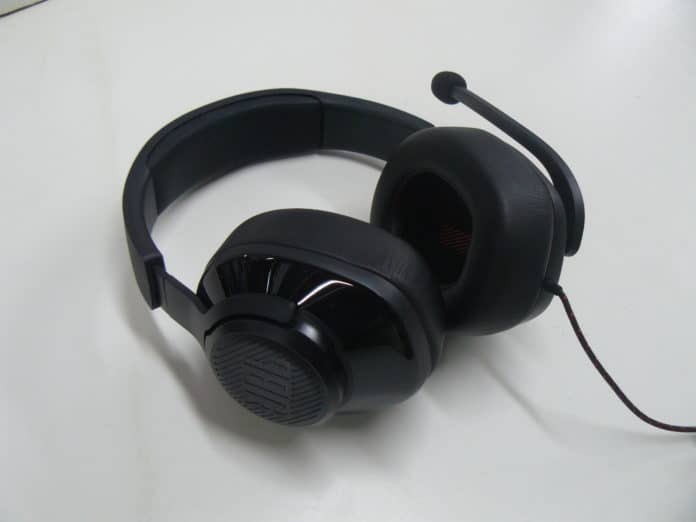I’m very excited to be finally reviewing a gaming headset for this website. I love testing headphones, and dissecting how they get us to hear and feel the music. Now with gaming headsets, I get to express my passion and fascination with sound design. Gaming, more than any medium, uses sound in ways so unique to the listeners’ perspective that it can change the narrative experience and how we interact with it. Game audio is still a baby that develops throughout multiple generations, from 8bit samples in the Nintendo Entertainment System to the intricate breathing system of “The Last of Us Part II.” So how do our gaming headsets heighten this experience? In today’s review, I’m going to tackle the JBL Quantum 200 and dive deep into how well it handles the complex aural field of game audio.
We all know JBL in some form or another. Recently I got to review the JBL Tune 225 wireless earbuds. JBL has a knack for creating satisfying sound signatures, with functional bass resonance, and warm textures across multiple bands of frequency. In the audiophile circles, they are an adequate producer of studio monitors but are mostly known for their consumer line of headphones. Now JBL looks to bring their character into the world of gaming headsets. Before I get into the meat and potatoes of this review, I should point out that I tested the Quantum 200 using a Playstation 4, which means I will be basing my review off of a stereo response. However, if this headset sounds right for you, but you want the full surround sound experience, PC and Xbox One support that.
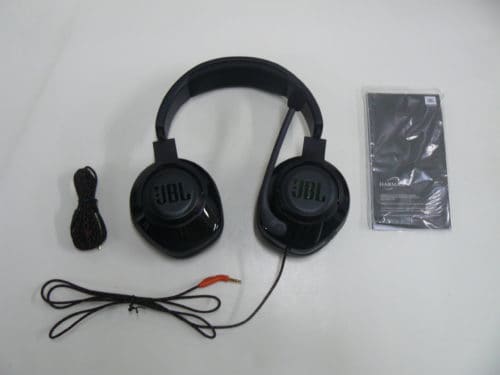
What You Get
The Quantum 200 doesn’t waste your time with a handful of accessories, it only provides the essentials, and a means to upgrade your experience. In the box, you’ll find the headset itself, mic, and 3.5 mm cable attached. Besides the user manual, the only other significant component of this package is the PC splitter that houses a heightened audio experience for Windows players.
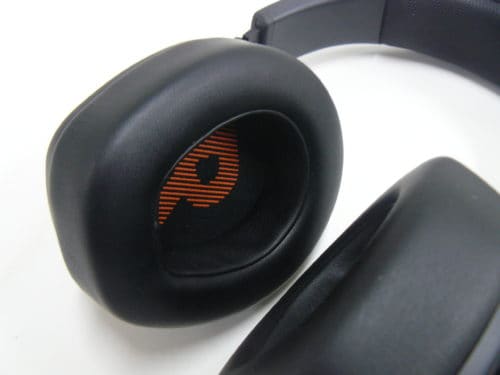
Look and Feel
On the outside, this is your standard JBL fair, which isn’t a qualm I have with this headset in any regard. Most JBL headphones have a sleek look that works for them, and they rarely stray far away from their basic compact aesthetic. The black glossy shell holds steady the large memory foam cups, and the padded headband rests on the top of your head without any added pressure. The memory foam wraps over your ears and secures your outer ear with these soft cushions pressing firmly against your head. The attached mic flips up, so you don’t have to deal with this awkward apparatus sitting in front of you when you’re not using voice chat. The Quantum 200 is overall a great fit and feels great for gaming sessions that go into that sweet goodnight.
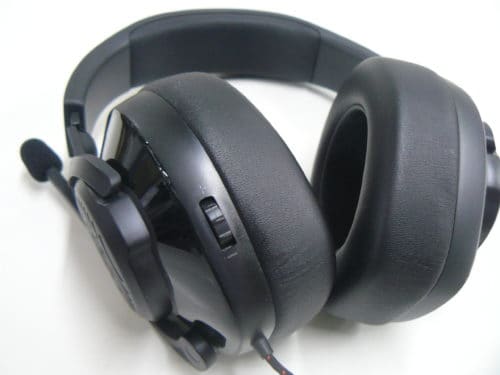
Design and Functionality
Inside the Quantum 200 uses 50mm drivers to express best the massive soundscapes and heavy music sections game audio is known to have. The Quantum 200 is partly a surround sound headphone, so the headset includes overhead channels for accurate 360 sonic representation. There aren’t many other button interfaces besides a volume knob to mention, which I mostly had cranked up the whole time, so I barely touched it. The onboard mic has a feature where flipping it up mutes your chat audio.
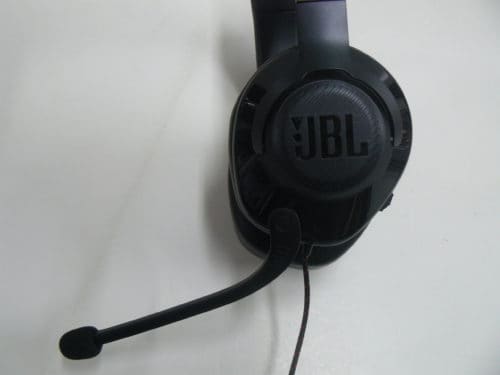
Microphone
I touched on Quantum’s microphone briefly, but I would like to add that this is a directional microphone about 4mm x1.5mm in size. It has a frequency response of 100Hz-10kHz and a sensitivity of -40 dBV @ 1 kHz / Pa. Testing the signal quality, I found that though the mic quality itself is nothing special, my voice came through transparent and clear. The quality of the mic itself has a roomy consistency that was noticeable but never proved to be a distraction. Other players had no problem discerning what I was saying, so callouts during competitive play will show no issue.
Output
The Quantum 200 has a Max input power of 30mW with a sensitivity of 100 dB SPL @1 kHz / 1mW. It rests at an impedance of 32 Ohms and has a frequency response of 20Hz-20kHz. Although the Quantum 200 boosts a lot of signal with its 50mm drivers, they don’t allow for much in the way of headroom. The signal comes all at once, or else it’s too quiet, and I mentioned before that I had the volume control cranked up the entire time.
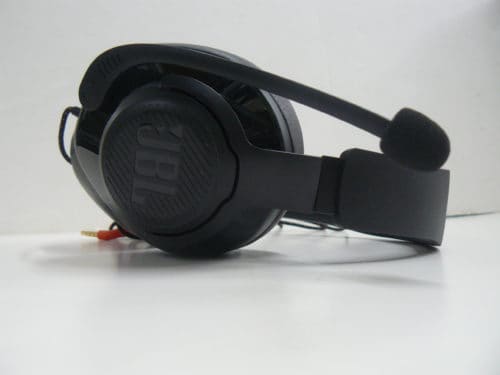
Soundstage
I think gaming headsets need to try to have a mediocre soundstage since the point of having a gaming headset is to make use of the complicated aural spaces, and if a headset fails to do that, then it’s not really a gaming headset. JBL usually succeeds in textured sounds, but soundstage has never been their strong suit. So how does JBL translate its fidelity to a gaming space? Let’s start with how JBL expands out of their comfort zone attempting to let the sound elements breathe.
I tested a few different games of various genres to get a sense of how well the Quantum 200 handles a plethora of different environments. The games I played were “Dark Souls II,” “The Last of Us Part II,” and “Hitman II”. I swear I didn’t plan on having three of four of the games I played having “2” in the title, it just ended up that way. Before I get into the specifics of the soundstage, I want to say that overall the Quantum 200 has an immersive space that respects the mix of the game being played, while dancing around the inside space of your head. It’s closed-back so the sounds never expand outside into your space, rather it invites you into the games’ own space.
In my playthrough of Dark Souls II, a game that has large wafts of environmental soundscapes that convey an intimidating atmosphere filled with harsh winds, roaring flames, and monsters that you’ll need to fight. These elements are placed within the stereo field with accuracy and power. What the Quantum 200 lacks in this regard is separation. Everything is in the right place, but it comes at you all at once, leaving little room to analyze the space in detail. However, I found that the headsets forward response helped convey that intimidating atmosphere, as the wind screamed through my ears and enemies shouted right in my face. I don’t think this design helped in the case of The Last of Us Part II and Hitman II, which features more subtle backgrounds and layered sound design.
Low End
JBL is usually somewhat savvy with their textured low frequencies, and the Quantum 200 is no different. Bass frequencies feature deep tones and buttery textures. Dark Souls II has a blacksmith character, and when he talks you can feel the low-end growl of his voice, like the vocal cords are vibrating right up against your ears. Room tones featured in The Last of Us Part II have a present glow that adds to the loneliness and uncertainty of specific settings. My only reservations on the lows are that I felt there was some sub-bass rumble missing. There’s a section I was playing in Dark Souls II where a giant enemy came out of the ground, but I felt that the headphone had a hard time conveying a sense of weight here. Overall JBL continues to add color to their low-end response.
Mids
While not making the most expansive use of this range, the Quantum 200 presents a forward nature to the mids that express some fine details and textures. The low mid focus allows for those harsh winds in Dark Souls to have a smoother perception that complements the design of the sound effect by not bloating the frequency bands. There’s some messiness in the layering of elements which I mentioned when talking about soundstage, but it’s especially apparent here in the mid-range, as backgrounds and big sound effects sometimes get pushed together, muddying the quality. However, in other aspects like dialogue, the mids stand out considerably. While I was playing Hitman, the character briefing my mission had a voice so detailed, they sounded as if they were directly in front of me. At times the mids command ample clarity when dealing with individual effects, but when multiple elements are combined, they become harder to define.
Highs
I was quite wowed by some of the energetic resonances in this range. The soundstage of the Quantum 200 allows for the highs to expand a lot more than the other ranges allow, creating a surprising impression on first listen. Some unique sound design elements receive a sizzling emphasis, such as the footsteps your character makes in Dark Souls as they’re walking through a reverberant hallway, or through ash. Reverb tails extend quite nicely and make for some crispy sword clashes. The detailed Gun clicks in The Last of Us Part II are portrayed with finesse and shine. The highs complement the sound design by calling attention to its unique characteristics.
Summary
This is a great first gaming headset for me to review because in a way this is the perfect first headset you should buy if you’ve never purchased one before. It’s a good jumping-off point as you look to upgrade to something better later on. At $49.95 this is more than a deal if you’re looking to buy your first gaming headset.
Pros and Cons:
Pros: Comfy, affordable, colorful sound signature
Cons: No surround on PS4, limited spread
JBL Quantum 200 available form Audio 46
MAJORHIFI may get a commission from retail offers.
MAJORHIFI may receive commissions from retail offers.


